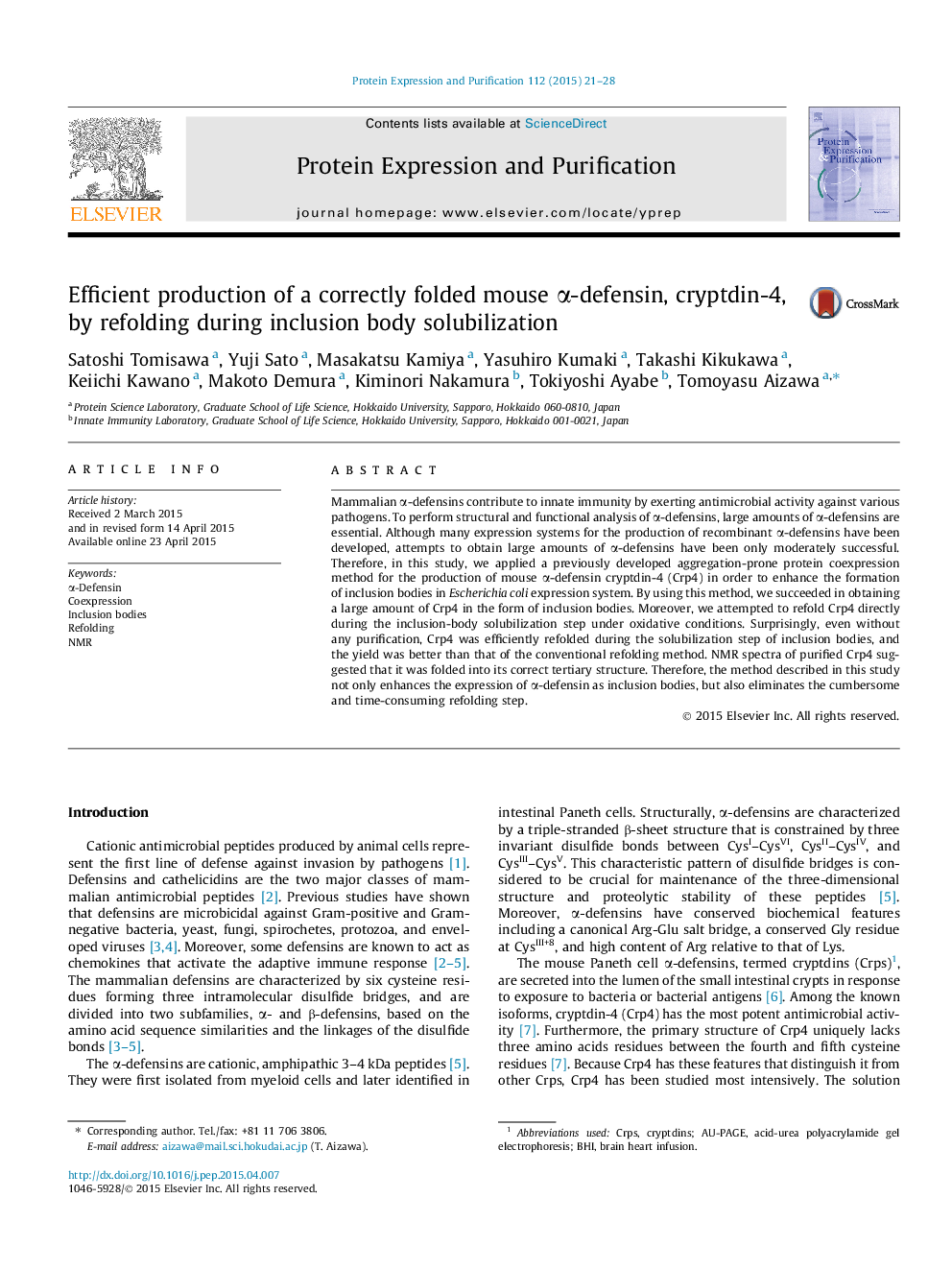| Article ID | Journal | Published Year | Pages | File Type |
|---|---|---|---|---|
| 2020276 | Protein Expression and Purification | 2015 | 8 Pages |
•Coexpression of the anionic partner protein enhanced the expression level of Crp4.•Crp4 was efficiently refolded during the solubilization process of inclusion bodies.•Crp4 was easily isolated from the partner protein by cation-exchange chromatography.•Purified Crp4 was active against both E. coli ML35 and Listeria monocytogenes.•NMR spectra of purified Crp4 suggested the formation of correct tertiary structure.
Mammalian α-defensins contribute to innate immunity by exerting antimicrobial activity against various pathogens. To perform structural and functional analysis of α-defensins, large amounts of α-defensins are essential. Although many expression systems for the production of recombinant α-defensins have been developed, attempts to obtain large amounts of α-defensins have been only moderately successful. Therefore, in this study, we applied a previously developed aggregation-prone protein coexpression method for the production of mouse α-defensin cryptdin-4 (Crp4) in order to enhance the formation of inclusion bodies in Escherichia coli expression system. By using this method, we succeeded in obtaining a large amount of Crp4 in the form of inclusion bodies. Moreover, we attempted to refold Crp4 directly during the inclusion-body solubilization step under oxidative conditions. Surprisingly, even without any purification, Crp4 was efficiently refolded during the solubilization step of inclusion bodies, and the yield was better than that of the conventional refolding method. NMR spectra of purified Crp4 suggested that it was folded into its correct tertiary structure. Therefore, the method described in this study not only enhances the expression of α-defensin as inclusion bodies, but also eliminates the cumbersome and time-consuming refolding step.
